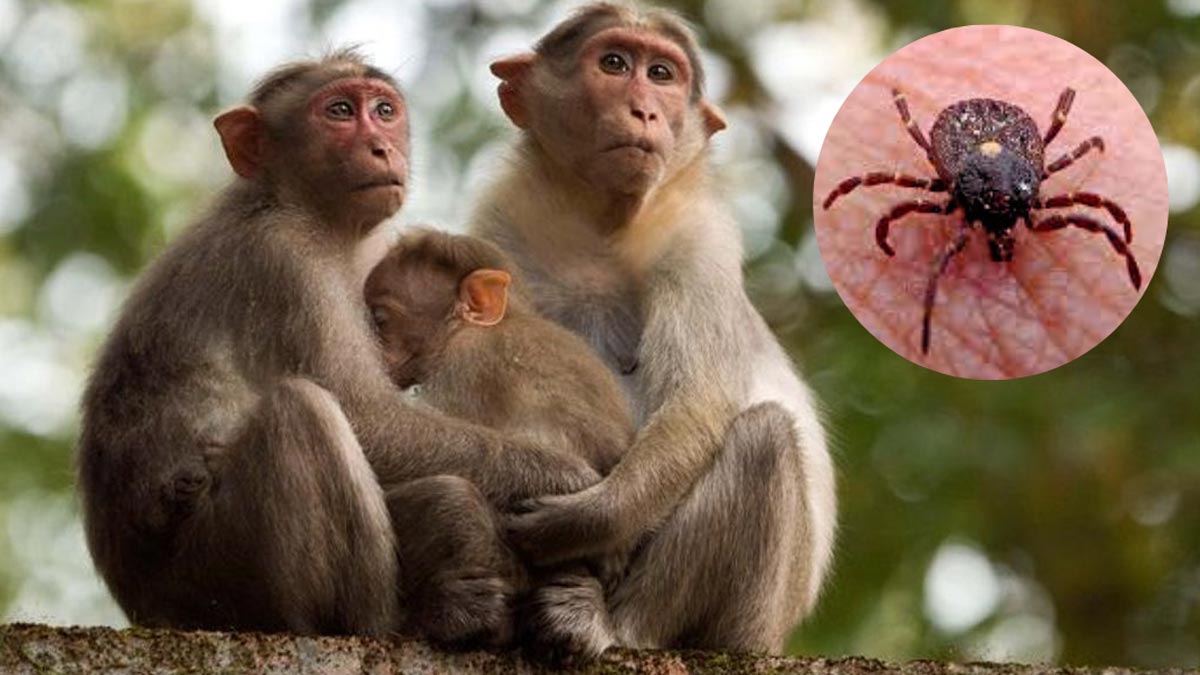
Monkey fever, scientifically termed Kyasanur Forest Disease (KFD), has reemerged in Karnataka, marking a concerning trend with two reported fatalities and an increasing number of confirmed cases. This tick-borne viral hemorrhagic fever, caused by the KFD virus belonging to the Flaviviridae family, predominantly affects primates but also poses a significant risk to humans. With the state witnessing 49 confirmed cases, it is imperative to comprehend the symptoms and adopt preventive measures to effectively combat this infectious disease.
Table of Content:-
Unveiling Monkey Fever

Transmission and Epidemiology
Originating in the dense forests of Kyasanur, Karnataka, in 1957, Monkey fever spreads through the bites of ticks, primarily the Haemaphysalis spinigera species, although occasional transmission from other animals like squirrels and rats has been observed. Humans contract the virus either through direct contact with infected ticks or via exposure to sick or deceased monkeys. It's noteworthy that human-to-human transmission does not occur. The epidemic typically peaks from October to April, with symptoms manifesting within 3-8 days post-infection.
Also Read: Monkeypox: Symptoms, Causes, Diagnosis, Treatment
Symptoms and Clinical Presentation
As per Dr Manish Itolikar, Consultant Physician, Fortis Hospital, Mulund, the onset of monkey fever is marked by a constellation of symptoms, including chills, severe headaches, and bleeding from various mucosal sites such as the nose, throat, gums, and intestines. Additionally, patients may experience neurological manifestations such as nausea, vomiting, muscle stiffness, tremors, and intense headaches. While the fever tends to resolve spontaneously within a few weeks for most individuals, the convalescence period may be characterized by persistent fatigue and muscle soreness.
Also Read: Monkey Malaria: Causes, Symptoms, Prevention and Treatment
Diagnosis and Treatment
Diagnosing monkey fever involves a series of blood tests, including hemagglutination inhibition assay (HI), complement fixation tests, reverse transcription-polymerase chain reaction (RT-PCR), and enzyme-linked immunosorbent assay (ELISA) to detect specific antibodies. Currently, there is no targeted treatment for monkey fever, with management focused on alleviating symptoms through intravenous fluid therapy and rest. Vaccination plays a pivotal role in prevention, with two initial doses recommended for individuals aged 7-65 years, followed by booster doses to maintain efficacy.
Preventive Measures
Effective prevention strategies are indispensable in curbing the spread of monkey fever. Early detection and prompt diagnosis, coupled with vigilant surveillance of tick hotspots, are crucial steps in containment efforts. Additionally, implementing targeted pesticidal treatment in affected areas and promoting the use of protective clothing and insect repellents, especially in forested regions, can significantly mitigate the risk of transmission.
Urgent Action and Awareness
With the surge in monkey fever cases, urgent action is warranted to implement preventive measures and raise public awareness about the disease's symptoms and transmission dynamics. By fostering a comprehensive understanding of the risks associated with monkey fever and advocating for proactive preventive measures, individuals can collectively safeguard themselves and their communities from the potentially devastating impacts of this infectious disease.
Also watch this video
How we keep this article up to date:
We work with experts and keep a close eye on the latest in health and wellness. Whenever there is a new research or helpful information, we update our articles with accurate and useful advice.
Current Version